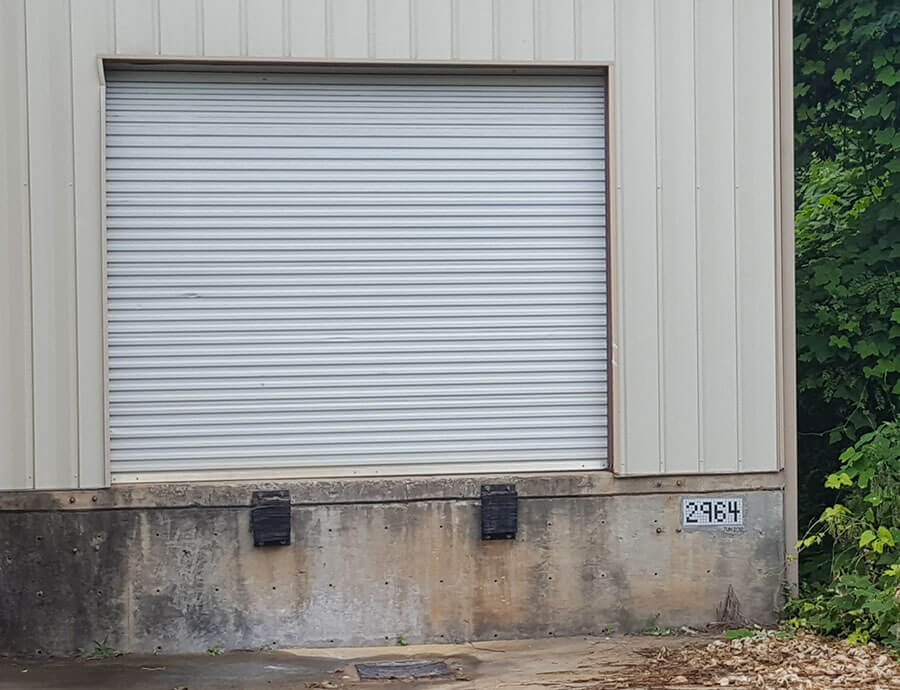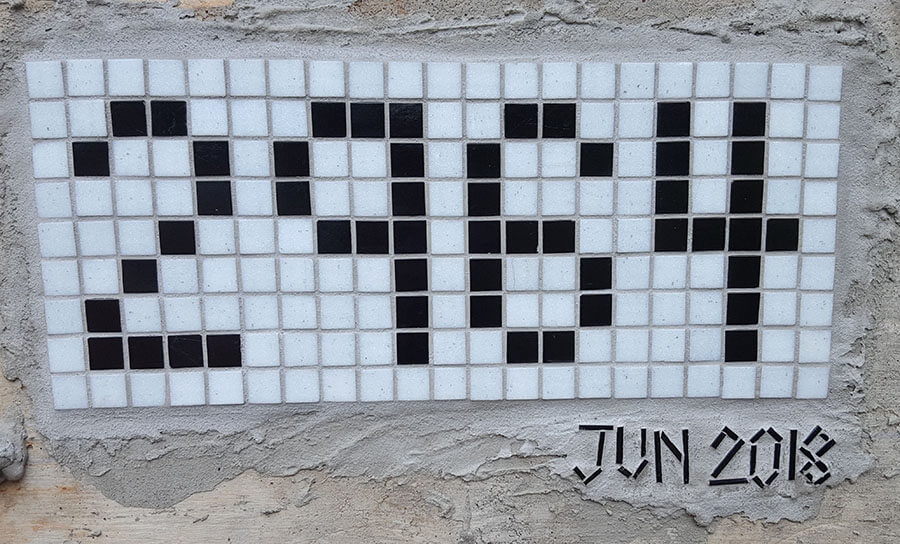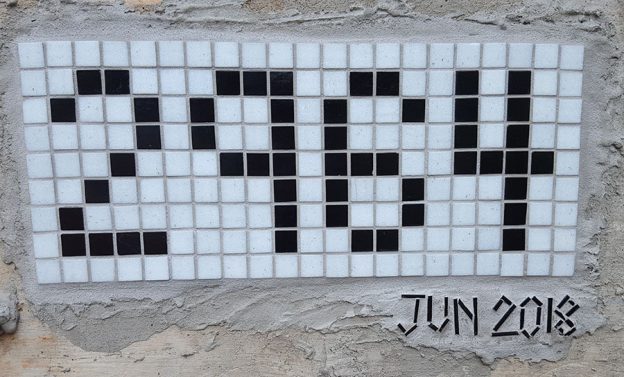Natalija decided to test some materials and methods by putting our street number on the loading dock of the warehouse. Her method was to lay 3/4-inch vitreous tile in a mounting grid, but she put them in upside down and laid a sheet of fiberglass mesh on them and used one drop of silicone adhesive on each tile to attach the mesh. My method would be to lay the tiles in the grid right side up and pick up the design with mosaic mounting tape.
The purpose of Natalija’s experiment was to demonstrate that the silicone adhesive was compatible with thinset mortar and that there wasn’t any problem with the silicone being compressible. That isn’t surprising because thinset mortar can tolerate displacement (movement of the tile) and the GE Silicone II we sell is pretty firm when cured. Nevertheless, I wouldn’t use silicone to mount tiles to a floor, although I am sure some people do, and they do so successfully because they don’t use a thick layer of it.
I am coming to accept that much of my resistance to silicone as a mosaic adhesive is due to the fact that people who had problems with it were due to using softer varieties or applying it too thickly. My thinking was that if people are likely to use it incorrectly, it was better to tell people to avoid it all together. Now I see that it has its place, especially for glass-on-glass mosaics where water-based glues like Weldbond might have trouble drying fully.

Street Number Without A Grid
If you would like to make a mosaic street number from tile or pieces of cut tile without a grid, you can do that by drawing a pattern (or printing one from a digital image) and then tiling the pattern using our contact-and-tape mosaic transfer method.

Mounting Your Street Number
Whether your design is a grid or free-form from cut pieces of tile, you should lay it up in advance on fiberglass mesh or mounting tape and then pressing the sheet into thinset mortar spread with a 3/16-inch notched trowel.
Backers For Your Street Number
Outdoor mosaic can be mounted directly to cement, stone, and masonry surfaces, although you should scour the surface with a steel brush to remove any dirt, paint, or contaminants. If the surface is uneven, such as a brick wall, you can plaster the part of the wall to be mosaiced with thinset mortar a day or two in advance of mounting the mosaic.
If your wall is wooden or can’t be mosaiced on for some reason, then you can make your mosaic on an outdoor mosaic backer.


Leave a Reply